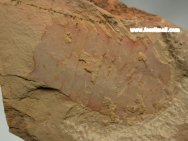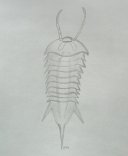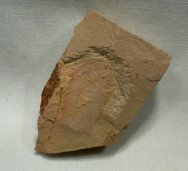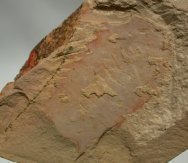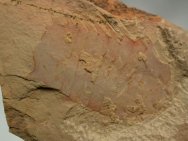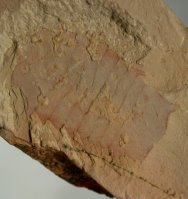Rhombicalvaria acantha
Arthropoda Hemetidae
Geological Time: Early Cambrian (~525 million years ago)
Size (25.4mm=1 inch): 25 mm long and 14 mm across on a 30 mm by 45 mm matrix
Fossil Site: Chengjiang Maotianshan Shales - Quiongzhusi Section, Yu’anshan Member, Heilinpu Formation, Mafang Village, Anning, Kunming County, Yunnan Province, China
|
The
diversity of soft-tissue fossils is astonishing: algae, medusiforms,
sponges, priapulids, annelid like worms, echinoderms, arthropods
(including trilobites), It bears some resemblance to the younger Burgess Shale genus Helmetia, which has led some to place them in the Helmetidae along with several other similar arthropods, such as Kuamaia and Panlongia. The body shape suggests that the helmetids were benthic animals which were possibly carnivorous. The species is only known from the Chengjiang Biota. |
